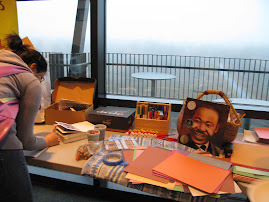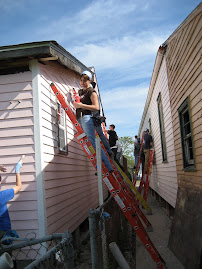Ciena brings me her book, I am a Bunny, while I write to this Blog. I stop to point out the picture of a robin feeding a worm to four baby birds in a nest. Then I change her diaper and help her negotiate sharing a toy with her sister. The book's illustrator, Richard Scarry, has been around for over thirty years connecting to the everyday experiences of children, such as this morning, when Ciena rode in the stroller, wearing earmuffs and mittens because it snowed yesterday, and pointed to flowers and birds, cars and dogs, and said their names. Then we checked the mail and found a postcard from Michael with his promise to send the girls: an Iraqi doll, though it's hard to shop, getting late, write more tomorrow.
Maizie, at four years of age, tries to imagine what an Iraqi doll looks like. I Google Iraqi doll, find: http://www.sunmt.org/crydolls.html with an article explaining how Iraqi boys want tanks and guns while girls prefer crying dolls. I know from my years in child development that children exposed to ongoing trauma either don't play, or, need assistance from adults and through the use of realistic props such as dolls who cry, to assist them with working through the discordant challenges in their midst.
For the quality of children's play is altered by war. Sara Smilansky's research indicates that toddlers, for example, benefit when adults model nurturing behavior (ie. adult rocks doll with blanket and feeds it bottle). And children need life-like props such as realistic dolls and baby bottles before they can imagine more creative applications (ie. child uses toothbrush to comb dolls hair or imagines he is stirring food in a bowl.) But the important thing is the research shows the value of quality adult-child interactions in the fostering of caring behavior.
Saturday, March 29, 2008
Subscribe to:
Post Comments (Atom)










No comments:
Post a Comment